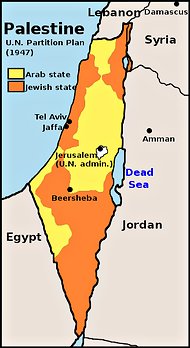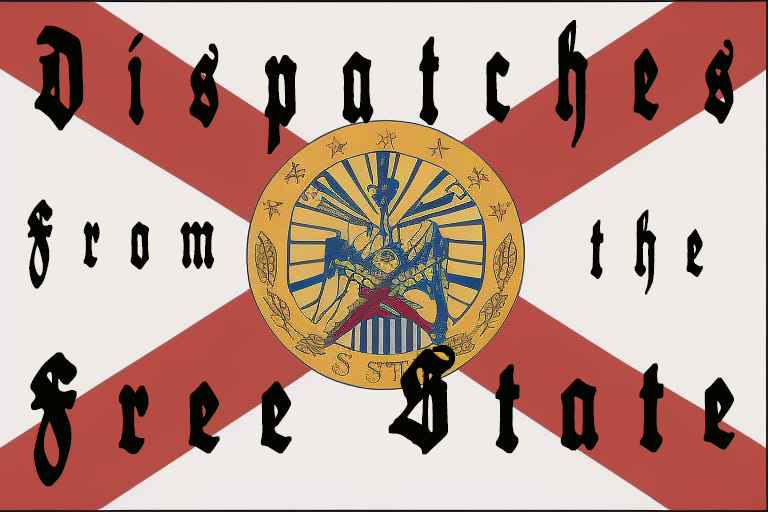ON ENDING THE CYCLE OF VIOLENCE IN THE REAL WORLD
Thirty years ago, I started my career as a counselor for delinquent and otherwise troubled teenage boys. Many were gang affiliated. One thing that they were not was conscientious of or attendant to the potential consequences of their behavior. Consequently, I spent a great deal of my early career dealing with conflict cycles. Over time, I learned how to recognize conflict cycles before they started and to intervene in constructive ways.
Counseling is what brought me into sociology as a field. Consequently, much of my approach to sociology is informed by my experiences as a counselor. This is often clear in my analysis of micro-level interactions. However, I find that what is true at the micro-level often has analogues at the macro. This is the case with conflict cycles. I’ve used conflicts cycles as a model to help make sense of other phenomena, most popularly in breaking down the nuances of police abuse of power.
In the last post I offered a more philosophical observation of the moral dilemma involved in taking a position on the Hamas-Israeli War. I presented the algorithm, violence sows fear. Fear engenders hatred. Hatred encourages violence. I presented this as a categorical truth. Any moral position on the conflict must acknowledge and reject the legitimacy of all three constructs because this truth is categorical for both Israelis and Palestinians, Likud and Hamas. It is, therefore, right to deplore Hamas’ atrocities on October 7th, as well as the crimes against humanity being committed by Israeli forces. It is morally indefensible to privilege one atrocity over another.
This is all well and good…philosophically speaking. But Israel really was attacked. Israeli citizens really were killed, kidnapped, brutalized, and raped by Hamas actors. How should Israel respond if war is not a morally legitimate option?
I’m afraid I do not have a solid answer. At least, I’m lacking any kind of answer that could realistically be put into effect at this point. The idea that both parties will, through some magical process, see the error in their ways and work hand-in-glove to right the interwoven fabric of wrongs that shrouds this conflict is a fantasy.
I think an analysis of conflict cycles, however, may help us narrow down some options, take the bad ideas off the table, and through a great deal of hard work and a great deal of compromise, end in a humane and workable solution.
In truth, there is no other morally legitimate option.
Conflict Cycles
The first thing we know about conflict cycles is that they will, eventually, end. The question is, what level of destruction will be necessary for this to happen?
A conflict cycle is a condition in which the decisions made by the actors in the conflict serve to perpetuate and even to escalate the conflict rather than resolve it. At the interpersonal level this may happen when one person responds to a perceived wrong. In my camp days a young man may have scuffed another kid’s brand-new sneakers. This was quite the offense at the time. The other kid feels maligned and yells at the scuffer. The scuffer didn’t mean to scuff the shoes. It was an accident (or not, it doesn’t really matter), but now he’s being maligned by being yelled at, so he yells back. Sneakers isn’t going to tolerated being yelled at. After all, he’s the aggrieved party. So, he yells back. Eventually we have pushing, shoving, punching…A conflict cycle.
This kind of interaction can be quite complex. Maybe the kid whose sneakers were scuffed doesn’t respond immediately, but he remembers the interaction and lashes out later, long after the sneakers are no longer an issue. I had one young man who refused to talk to me or interact with me in any way for two months. I could see our interactions were building to breaking point where this young man was going to push a physical confrontation with me. Fortunately, I was able to recognize the conflict cycle and press him to explain his grievance with me. It turns out that I had a blue bandana tied to my backpack. This blue bandana was also used as a symbol by a rival gang, so he immediately disliked me, believing that I favored this rival gang over him.
At the macro level the Israeli-Palestinian conflict cycle is even more complicated. Whereas a stalwart counselor can get to the bottom of the shoe scuffing conflict or the blue bandana conflict, and come up with some kind of resolution, the catalyst for the Israeli-Palestinian conflict is a matter of perspective distorted by politics and rhetoric.
An expansive view may place the genesis of the conflict with the Balfour Declaration in which it became British policy to establish a homeland for Jews in what was then a contested province of the embattled Ottoman Empire. In the 1920’s, the League of Nations gave Britain the governing Mandate of Palestine by which the Balfour Declaration could be put into effect. This was the result of complex political maneuverings between Jewish Zionists, allies of the Zionist movement and even those who saw a Jewish state as a solution to their nations’ “Jewish problem”.

Regardless, between the Balfour Declaration, the fall of the Ottoman Empire and the United Nations Resolution 181 partitioning Palestine between ethnic Palestinian Arabs and Jews, the stage was set for disaster. Once Britain withdrew its oversight from the region, the die was cast. Two ethnic groups, with opposing interests, were thrown into open competition for land and recognition with no available, legitimate process to resolve the conflict.
Who started this conflict cycle? Short-sighted British overseers? Militant Zionists? Arab attacks on Israeli lands? The forcible displacement of Palestinians during the Nakba? In the end, it hardly matters. Ascribing blame is not an effective strategy for ending a conflict cycle. When the cycle began, both parties were convinced of the justifications for their actions. Ascribing blame only serves to retrench one party to the conflict, making them resistant to the process.
The process is important.
Conflict cycles end in one of three ways:
- The most powerful actor escalates beyond the abilities of the less powerful to act in its defense. In interpersonal terms this often means violence. Add a gun to the conflict and someone is likely to die. In macro terms, this means war, occupation, ethnic cleansing or even genocide. If the most powerful actor is not powerful enough to permanently destroy the less powerful, this outcome is nothing more than temporary. The less powerful actor, having been victimized, will wait for an opportunity to assert its own power, resurrecting the conflict and perpetuating the cycle.
- A more powerful external force will intervene to end the cycle by applying force to both participants.1 This can be the end of a conflict cycle if this external force works to resolve the issues perpetuating the conflict cycle. This third power can bring both parties to the table to negotiate. If the third power does nothing to resolve the underlying problems, however, the intervention will last only as long as the intervening party is willing to assert power.
- At least one of the actors involved in the cycle chooses to end its participation in the conflict.
The third outcome is optimal and the only morally acceptable way the Palestinian-Israeli Conflict Cycle can be resolved. As it stands, there is no clear pathway for such an outcome. About a century of bloodshed, terrorism, oppression, and retaliation on both sides has left open wounds too large to be salved with alms to peace. Since October 7th and its aftermath, those wounds are even wider and bleeding more profusely.
Option 2 also seems unlikely in the near future. First we would have to ask, which nation is in a legitimate and practical position to apply such force? That’s a short list. Most obviously, the United States has the power and, arguably, the political legitimacy to intervene. It’s unlikely, however, that the United States has the political will to assert the necessary power. The issue is just one more polarizing element in an already over polarized society.2
The only other potential actor on this short list is the United Nations itself. It is clear that any redress of the Israeli-Palestinian Conflict Cycle will require international intervention and approval. Given the lackluster history of the U.N. in this matter, however, finding a unicorn laying in a patch of four-leafed clovers is more likely than a successful U.N. intervention…especially without the full support and backing of the United States.
That leaves outcome one. This is where we are now. It is clear that Israel’s strategy here is to impose as much suffering on Gaza as they can. The expressed goal of this strategy is to deter future strikes against Israelis. Hamas will be made to understand that any such actions in the future will have devastating consequences for the Gazans they profess to represent.
It’s hard to believe, however, that Hamas was not aware of the potential consequences for the October 7th attacks. Indeed, it may be that Hamas was counting on a disproportionate response on Israel’s part. Images of Gazans, their plight already a cause for global protest, suffering, dying, and crying under Israeli bombs is a sure way to turn public opinion away from Israel. Gazan citizens, after years of virtual imprisonment and immiseration by Israel, may also be further radicalized by Israel’s response. Watching one’s family killed, maimed, dispossessed, and homeless has that effect. That Hamas may be willing to sacrifice so many Gazans to advance their political goals is appalling, but cannot be ruled out when deciding upon a response.
Other goals may be more cynical. That is, military operations in Gaza may be an excuse for good, ol’ fashioned territorial acquisition necessitating the ethnic cleansing of Palestinians from the region. Israeli Agricultural Minister Avi Dichter seemed to confirm this goal when he pointed out, “We are now rolling out the Gaza Nakba.” Though Netanyahu himself is cautious about using such language, talk of a new Nakba, a reference to the 1948 expulsion or forced migration of Palestinians from apportioned lands, is reflected in a “concept paper” leaked to the press. The paper, reportedly, suggests the permanent displacement of all Palestinians in Gaza to tent cities in Sinai.
The Nakba is a seminal moment in Palestinian collective memory and history. A key obstacle to peace has been the disagreement over Palestinian claims to a “right of return” to lands lost in 1948. Forced displacement is also consistent with existing Israeli policy in the West Bank. According to Amnesty International, “Over the past 50 years, Israel has demolished tens of thousands of Palestinian properties and displaced large swathes of the population to build homes and infrastructure to illegally settle its own population in the occupied territories. It has also diverted Palestinian natural resources such as water and agricultural land for settlement use.”
Policy even perceived to be intended to permanently displace Palestinians will only exacerbate the existing crisis. The threat of another Nakba has, for some, become a rallying cry for resistance. According to Al Jazeera, “while thousands of people are evacuating, many others refuse to do so – and overall support for armed resistance to Israel’s attacks appears intact. Crowds thronged the streets in different parts of Gaza on Friday, chanting slogans and insisting that they will not leave their homes.”
That Hamas hides among civilians and has spiderwebbed subterranean Gaza with an expansive tunnel network under urban areas, including hospitals, is deplorable. This fact does not validate the bombing of urban centers, and hospitals, and the killing of civilians.
Israel’s expressed goal to eliminate Hamas is equally short sighted, especially when this claim is tagged by an “at all costs” addendum. That Hamas hides among civilians and has spiderwebbed subterranean Gaza with an expansive tunnel network under urban areas, including hospitals, is deplorable. This fact does not validate the bombing of urban centers, and hospitals, and the killing of civilians. Doing so only perpetuates Hamas’ claims as a bulwark against Israel. This hypothesis is born out with recent polls showing increased support for Hamas among Palestinians.
Furthermore, about half of all Palestinians live outside of Gaza, the West Bank, and Israel. According to the Arab Center in Washington DC, around 7 million Palestinians are part of a “diaspora” living outside the range of Israeli missiles. All such Palestinians share grievances against Israel and many likely have sympathy for Hamas. Every single member of Hamas could be rooted out of Gaza and still, the organization will survive, taking any opportunity to return and mete revenge on Israel for yet more travesties inflicted on Palestinians. Eliminating Hamas through relentless bombing, invasion, and displacement will not work.
No variation of option one was is morally defensible. Nor are they defensible in terms of Israel’s expressed strategic goals of deterrence, security, and justice in the face of attack.
An Appropriate Response?
This brings us to the original question driving this essay. What is an appropriate response on Israel’s part? This is a fair question. Israel cannot be asked not to respond to such an atrocious attack. It’s also reasonable to accept that Israel’s response must be, to a certain extent, violent.
Unfortunately, expertise on interpersonal conflict cycles does not translate directly into the international arena. If you’ve read this far for a clear answer, I’m sorry. You are going to be disappointed. That actual experts in this arena are also incapable of giving a clear answer is only tangentially reassuring. The truth is that there is no clear answer to “what should Israel do.” That’s why Israel’s disproportionate response is so easy to defend. During times of crisis, people want easy answers. Bombing is an easy answer.
It’s also the wrong answer.
That there is no one “right” answer to this question, however, does not mean we cannot use our understanding of conflict cycles to recommend some criteria for appropriate responses.
First and foremost, Israel is well within its rights to retaliate against Hamas. The question is, how can Israel do this without also targeting innocent civilians? We have to keep in mind that Hamas has demonstrated exactly zero regard for the thousands of Palestinians killed thus far. There’s no reason to think that dead Palestinians will equate to chastened Hamas or a safer Israel.
Secondly, targeting of civilians, whether indiscriminate of not, must be condemned without qualification. Hama’s is hiding its headquarters under a hospital? You still can’t bomb the hospital. You have to find another way of dealing with that problem. Hamas fighters are hiding in an elementary school. They’re safe. You don’t bomb an elementary school. Furthermore, Gazan citizens cannot be held accountable for Hamas’ acts. Collective Punishment is already condemned in international law.
Finally, territorial gains are off the table. Palestinian displacement and claims for a right of return is a key factor perpetuating the conflict.
A purely military approach cannot satisfy these criteria. October 7th was not a military operation. It was an atrocious criminal act. I’ve made this argument before about al Qaeda and 9/11. These organizations are better defined not as terrorists, but rather as criminal syndicates. Criminal syndicates, like the Mafia, were not disempowered through military strategy. They were brought down by a law enforcement approach. The same can be brought to bare against Hamas.
True, unlike al Qaeda or the Mafia, Hamas is a de facto governing body. This does not change the approach. On October 7th Hamas demonstrated that it continues to define its motives in terms of terror, with a willingness to sacrifice its own citizens for violent political ends. This is not a governing authority any more than are Mexican and South American drug cartels. Hamas is a criminal organization and should be treated as such.
This strategy, however, requires international cooperation. A sound, criminal justice approach to undermining Hamas means that most nations must reject the organization as a governing body. Furthermore, international cooperation is necessary to freeze its financial assets and infiltrate international networks. It also means concerted efforts against nations like Iran who serve as Hamas’ patrons.
After October 7th, Israel had a great deal of international capital and support. It’s barbarous actions in Gaza have eroded that support while propping Iran’s status. Guided by blind retribution, Israel has lost any goodwill it may have been able to use to effectively deal with Hamas. It has also made resolution to its conflict with Palestine impossible to imagine. This also plays into Hamas’ hands, as its success is bound to perpetuate this bloody conflict cycle, driving more Palestinians into Hamas’ embrace.
Ultimately, the goal must be to end the overall conflict cycle. This one-sided war is cannot effect an end to the conflict-cycle in any way short of genocide. This cannot be allowed.
Option three suggests that a conflict cycle can be ended when at least one participant chooses to not participate. When I was training counselors to avoid conflict cycles with clients I reminded them that they were they were the actors with the most power. Therefore, it was incumbent upon them to avoid entering a conflict cycle, and to take it upon themselves to end it if one starts. The actor with the most power has the greater responsibility to end the conflict cycle. This may mean that the counselor would have to swallow some pride and take some abuse before the conflict could be resolved.
In this macro conflict cycle, Israel is the most powerful actor. As such, it is incumbent upon Israel to take the first step to end the cycle. This will require some hard choices. The bare minimum of ending any conflict is in recognizing and respecting the basic human dignity of all actors involved. With regard to Israel and Palestine, the first step is the recognition both Israel and Palestine deserve to exist. It also means recognizing and accepting the sovereignty of each.
On Israel’s part, that means an end to its expansion through settlement on Palestinian land. It means an end to the lockdown on Gaza. It means territorial concessions that may be painful to make.
On Palestine’s part, it means recognizing that a right of return is not likely to happen…at least not in the way desired. We can debate the legitimacy of how Israel established sovereignty over its borders all we want, but it is unlikely that Israel will give that up in any significant way. Israel is as unlikely to surrender its territorial integrity as the United States is of returning lands lost after the Trail of Tears, or the Sioux Wars.
Conflict cycles only end when both parties realize that they benefit from the end of the conflict, and they do not benefit from continuing the conflict. The most powerful actor has the responsibility to begin the process. But the less powerful must also respect the process. There is no other way.
Read Part 1: On Standing Up Against the Violence Cycle
Notes
- If a third power intervenes on behalf of one of the actors, that is an example of the first outcome. In this case, one party is empowered over the other through a third. ↩︎
- It is important to note that neither party can risk the potential intra-party rift that might result for taking such action. The Democratic Party is already reeling from the divisions. ↩︎





Leave a comment